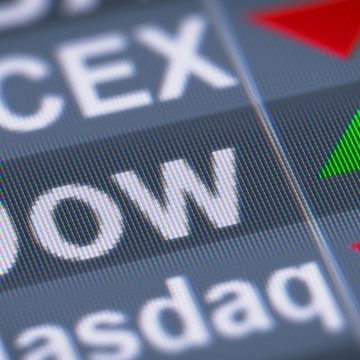Best Global Stock Markets, last 365 days (till 07 July 2025)
In this detailed Q&A, we break down the latest global market performance, highlighting top-performing indices, currencies, commodities, and cryptocurrencies, along with those lagging behind, to guide your investment decisions. Not all financial instruments, stocks, crypto coins and even indices, are covered, but the main ones, as well as the notable winners and losers, are probably covered here.
Which global stock markets have performed best in the last year?
-
Israel’s TA-35 Index: Increased by 48.31%, boosted by strong domestic economic growth and investor confidence.
-
Hong Kong’s Hang Seng: Rose 36.11%, driven by China’s economic reopening and supportive government policies.
-
Germany’s DAX: Gained 30.48%, reflecting robust industrial activity and resilience in Europe’s largest economy.
-
South Africa Top 40: Up 21.13%, benefiting from commodity price recovery and improved economic outlook.
Which markets underperformed significantly?
-
Japan’s Nikkei 225: Declined by 3.84%, impacted by slower economic recovery and weak domestic demand.
-
Saudi Arabia’s TASI: Fell by 2.80%, due to volatility in oil prices and regional geopolitical tensions.
-
France’s CAC 40: Virtually flat (+0.04%), constrained by sluggish industrial output and political uncertainties.
What’s happening in currency markets?
-
Euro (EUR/USD) strengthened by 8.73%, driven by monetary policy shifts, U.S. dollar moderation, and better-than-expected European economic data.
-
Japanese Yen (USD/JPY) gained 9.09%, reflecting increased demand for safe-haven currencies amidst global uncertainty and favorable monetary policy adjustments.
Why has gold surged while oil prices collapsed?
-
Gold: Increased by 39.63%, benefiting from heightened geopolitical tensions, inflation concerns, and increased investor demand for safe-haven assets.
-
Oil (WTI Crude): Fell 18.80%, impacted by concerns about slowing global economic growth, excess production, and weaker-than-anticipated demand.
Which cryptocurrency was the standout performer?
-
Bitcoin: Grew 93.22%, driven by institutional adoption, regulatory clarity, and increased mainstream acceptance despite broader market volatility.
Why did Ethereum underperform Bitcoin?
-
Ethereum decreased by 13.49% annually, impacted by regulatory concerns and competition from alternative platforms, although it posted exceptional recent performance over Bitcoin, rising significantly over the last three months due to optimism around future network upgrades.
What about major U.S. stocks like NVIDIA and Tesla
-
NVIDIA: Increased by 24.23%, with significant recent gains driven by booming demand in artificial intelligence and strong semiconductor sector growth.
-
Tesla: Gained 17.67% over the year but faced a decline of 24.65% year-to-date, reflecting concerns around profitability and increased competition in the electric vehicle market.
What does the volatility in U.S. Treasury yields signal?
-
Treasury yields rose modestly by 1.84% over the year but decreased by 4.11% year-to-date, reflecting investor uncertainty about future Federal Reserve interest rate actions, inflation prospects, and broader economic growth outlook.
How should global investors interpret these trends?
-
Strong equity markets in Israel, Germany, and Hong Kong indicate regions investors may explore for continued momentum.
-
Gold’s performance underscores the importance of portfolio diversification into traditional safe-haven assets.
-
Bitcoin’s resilience highlights sustained institutional support, positioning it as a viable diversification option.
-
Oil’s downturn and Treasury volatility signal potential caution regarding growth-sensitive assets amid global economic uncertainties.
Regional stock market insights explained:
-
Israel: Economic strength, technological innovation, and investor confidence supported significant market growth.
-
Hong Kong: Benefited from China’s economic reopening and supportive governmental economic policies.
-
Germany: Solid industrial and export growth amid stable economic fundamentals boosted investor sentiment.
-
South Africa: Rising commodity prices and improved economic sentiment attracted investor interest.
-
Japan: Economic recovery remained tepid with sluggish domestic demand impacting stock market performance.
-
Saudi Arabia: Oil price volatility and geopolitical tensions weighed heavily on market performance.
-
France: Minimal growth reflecting industrial challenges, policy uncertainty, and weaker domestic economic data.
What’s the investor takeaway?
One thing you can be not surprised about next year’s biggest winners — you’ll probably be, again, surprised. Who imagined that Israel’s stock market would be the big global winner so far, outside of Bitcoin? And who knows what crypto will be like in 365 days? So, as ForexLive.com evolves to investingLive.com this summer, you can evolve as well and consider diversifying across regions and asset classes, balancing high-growth opportunities such as Bitcoin and select equities with safe-haven assets like gold, especially amid global uncertainties. Carefully assess regional economic conditions, monetary policy shifts, and geopolitical risks to enhance your portfolio performance.
Disclaimer: This article is for informational purposes only. Investors should conduct their own research or consult a financial advisor before making investment decisions.
This article was written by Itai Levitan at www.forexlive.com.
Feed from Forexlive.com












